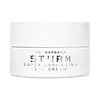What's inside
What's inside
 Key Ingredients
Key Ingredients

 Benefits
Benefits

 Concerns
Concerns

 Ingredients Side-by-side
Ingredients Side-by-side

Water
Skin ConditioningHelianthus Annuus Seed Oil
EmollientGlycerin
HumectantPotassium Cetyl Phosphate
EmulsifyingOctyldodecanol
EmollientCetyl Alcohol
EmollientCoco-Caprylate
EmollientPrunus Amygdalus Dulcis Oil
Skin ConditioningLactobacillus/Portulaca Oleracea Ferment Extract
AntioxidantHydrogenated Palm Glycerides
EmollientAcacia Senegal Gum
MaskingFructose
HumectantBrassica Campestris Sterols
EmollientCaprylic/Capric Triglyceride
MaskingPrunus Armeniaca Kernel Oil
MaskingMangifera Indica Seed Oil
EmollientAlbizia Julibrissin Bark Extract
MaskingAesculus Hippocastanum Extract
AntioxidantPanax Ginseng Root Extract
EmollientHydrolyzed Algin
Sodium Hyaluronate
HumectantLeuconostoc/Radish Root Ferment Filtrate
AntimicrobialCeramide NP
Skin ConditioningDarutoside
Skin ConditioningPanthenol
Skin ConditioningButylene Glycol
HumectantMaris Aqua
HumectantHydrogenated Lecithin
EmulsifyingPentylene Glycol
Skin ConditioningHydrolyzed Rhizobian Gum
Xanthan Gum
EmulsifyingEthylhexylglycerin
Skin ConditioningButyrospermum Parkii Butter
Skin ConditioningC12-16 Alcohols
EmollientPalmitic Acid
EmollientSqualane
EmollientSodium Phytate
Tocopherol
AntioxidantCitric Acid
BufferingSucrose
HumectantPantolactone
HumectantSodium Benzoate
MaskingPhenoxyethanol
PreservativePotassium Sorbate
PreservativeAlcohol
AntimicrobialWater, Helianthus Annuus Seed Oil, Glycerin, Potassium Cetyl Phosphate, Octyldodecanol, Cetyl Alcohol, Coco-Caprylate, Prunus Amygdalus Dulcis Oil, Lactobacillus/Portulaca Oleracea Ferment Extract, Hydrogenated Palm Glycerides, Acacia Senegal Gum, Fructose, Brassica Campestris Sterols, Caprylic/Capric Triglyceride, Prunus Armeniaca Kernel Oil, Mangifera Indica Seed Oil, Albizia Julibrissin Bark Extract, Aesculus Hippocastanum Extract, Panax Ginseng Root Extract, Hydrolyzed Algin, Sodium Hyaluronate, Leuconostoc/Radish Root Ferment Filtrate, Ceramide NP, Darutoside, Panthenol, Butylene Glycol, Maris Aqua, Hydrogenated Lecithin, Pentylene Glycol, Hydrolyzed Rhizobian Gum, Xanthan Gum, Ethylhexylglycerin, Butyrospermum Parkii Butter, C12-16 Alcohols, Palmitic Acid, Squalane, Sodium Phytate, Tocopherol, Citric Acid, Sucrose, Pantolactone, Sodium Benzoate, Phenoxyethanol, Potassium Sorbate, Alcohol
Water
Skin ConditioningPropylheptyl Caprylate
EmollientGlycerin
HumectantCaprylic/Capric Triglyceride
MaskingGlyceryl Stearate
EmollientVitis Vinifera Seed Oil
EmollientCetearyl Alcohol
EmollientAlbizia Julibrissin Bark Extract
MaskingDarutoside
Skin ConditioningSodium Hyaluronate
HumectantCeteareth-23
CleansingCeteareth-6
EmulsifyingPhenoxyethanol
PreservativeEthylhexylglycerin
Skin ConditioningCarbomer
Emulsion StabilisingTriethanolamine
BufferingTocopherol
AntioxidantBeta-Sitosterol
Emulsion StabilisingSqualene
EmollientGlyceryl Linolenate
EmollientWater, Propylheptyl Caprylate, Glycerin, Caprylic/Capric Triglyceride, Glyceryl Stearate, Vitis Vinifera Seed Oil, Cetearyl Alcohol, Albizia Julibrissin Bark Extract, Darutoside, Sodium Hyaluronate, Ceteareth-23, Ceteareth-6, Phenoxyethanol, Ethylhexylglycerin, Carbomer, Triethanolamine, Tocopherol, Beta-Sitosterol, Squalene, Glyceryl Linolenate
 Reviews
Reviews

Ingredients Explained
These ingredients are found in both products.
Ingredients higher up in an ingredient list are typically present in a larger amount.
We don't have a description for Albizia Julibrissin Bark Extract yet.
This ingredient is an emollient, solvent, and texture enhancer. It is considered a skin-softener by helping the skin prevent moisture loss.
It helps thicken a product's formula and makes it easier to spread by dissolving clumping compounds.
Caprylic Triglyceride is made by combining glycerin with coconut oil, forming a clear liquid.
While there is an assumption Caprylic Triglyceride can clog pores due to it being derived from coconut oil, there is no research supporting this.
Learn more about Caprylic/Capric TriglycerideWe don't have a description for Darutoside yet.
Ethylhexylglycerin (we can't pronounce this either) is commonly used as a preservative and skin softener. It is derived from glyceryl.
You might see Ethylhexylglycerin often paired with other preservatives such as phenoxyethanol. Ethylhexylglycerin has been found to increase the effectiveness of these other preservatives.
Glycerin is already naturally found in your skin. It helps moisturize and protect your skin.
A study from 2016 found glycerin to be more effective as a humectant than AHAs and hyaluronic acid.
As a humectant, it helps the skin stay hydrated by pulling moisture to your skin. The low molecular weight of glycerin allows it to pull moisture into the deeper layers of your skin.
Hydrated skin improves your skin barrier; Your skin barrier helps protect against irritants and bacteria.
Glycerin has also been found to have antimicrobial and antiviral properties. Due to these properties, glycerin is often used in wound and burn treatments.
In cosmetics, glycerin is usually derived from plants such as soybean or palm. However, it can also be sourced from animals, such as tallow or animal fat.
This ingredient is organic, colorless, odorless, and non-toxic.
Glycerin is the name for this ingredient in American English. British English uses Glycerol/Glycerine.
Learn more about GlycerinPhenoxyethanol is a preservative that has germicide, antimicrobial, and aromatic properties. Studies show that phenoxyethanol can prevent microbial growth. By itself, it has a scent that is similar to that of a rose.
It's often used in formulations along with Caprylyl Glycol to preserve the shelf life of products.
Sodium Hyaluronate is hyaluronic acid's salt form. It is commonly derived from the sodium salt of hyaluronic acid.
Like hyaluronic acid, it is great at holding water and acts as a humectant. This makes it a great skin hydrating ingredient.
Sodium Hyaluronate is naturally occurring in our bodies and is mostly found in eye fluid and joints.
These are some other common types of Hyaluronic Acid:
Learn more about Sodium HyaluronateTocopherol (also known as Vitamin E) is a common antioxidant used to help protect the skin from free-radicals and strengthen the skin barrier. It's also fat soluble - this means our skin is great at absorbing it.
Vitamin E also helps keep your natural skin lipids healthy. Your lipid skin barrier naturally consists of lipids, ceramides, and fatty acids. Vitamin E offers extra protection for your skin’s lipid barrier, keeping your skin healthy and nourished.
Another benefit is a bit of UV protection. Vitamin E helps reduce the damage caused by UVB rays. (It should not replace your sunscreen). Combining it with Vitamin C can decrease sunburned cells and hyperpigmentation after UV exposure.
You might have noticed Vitamin E + C often paired together. This is because it is great at stabilizing Vitamin C. Using the two together helps increase the effectiveness of both ingredients.
There are often claims that Vitamin E can reduce/prevent scarring, but these claims haven't been confirmed by scientific research.
Learn more about TocopherolWater. It's the most common cosmetic ingredient of all. You'll usually see it at the top of ingredient lists, meaning that it makes up the largest part of the product.
So why is it so popular? Water most often acts as a solvent - this means that it helps dissolve other ingredients into the formulation.
You'll also recognize water as that liquid we all need to stay alive. If you see this, drink a glass of water. Stay hydrated!
Learn more about Water